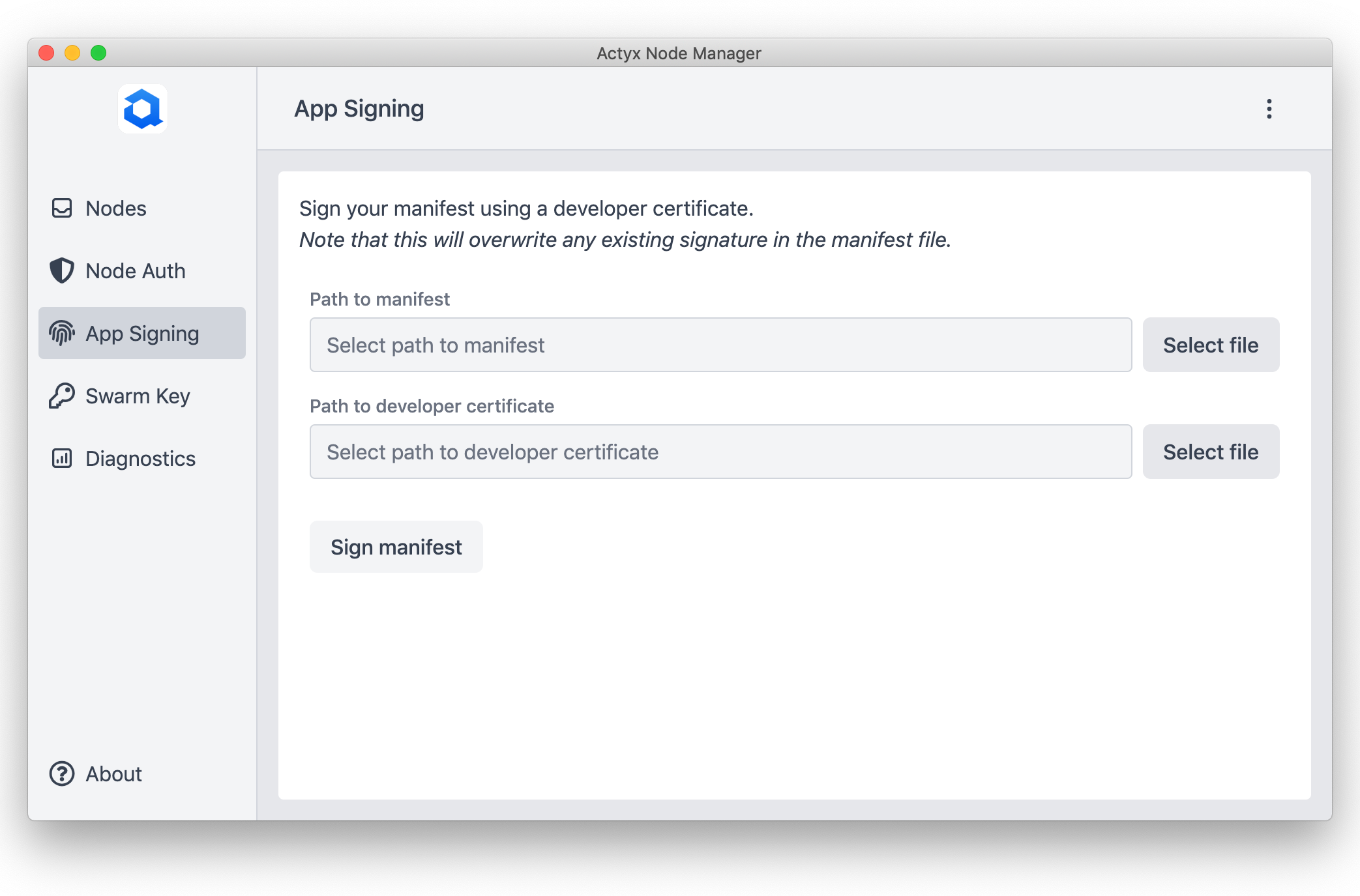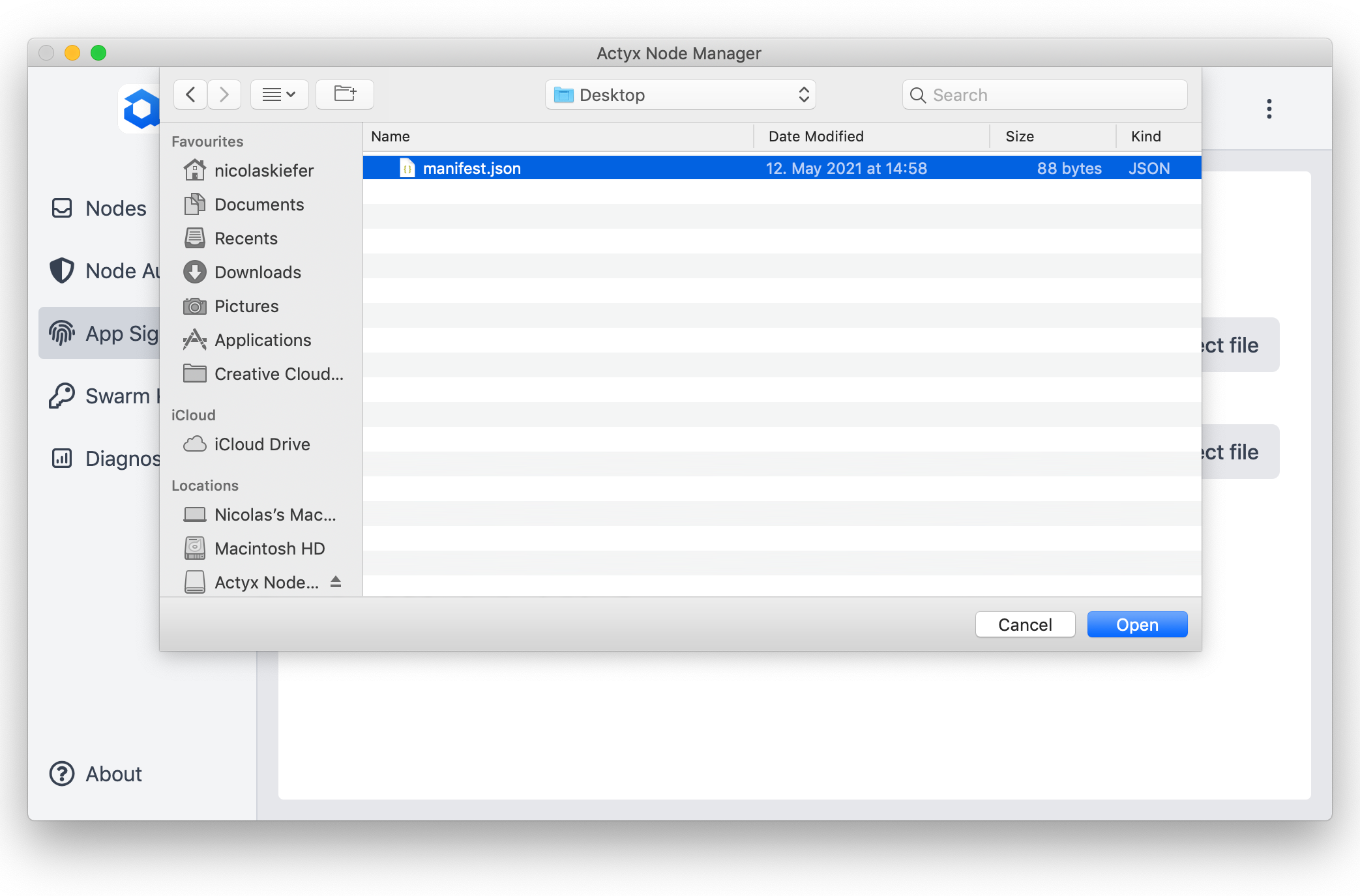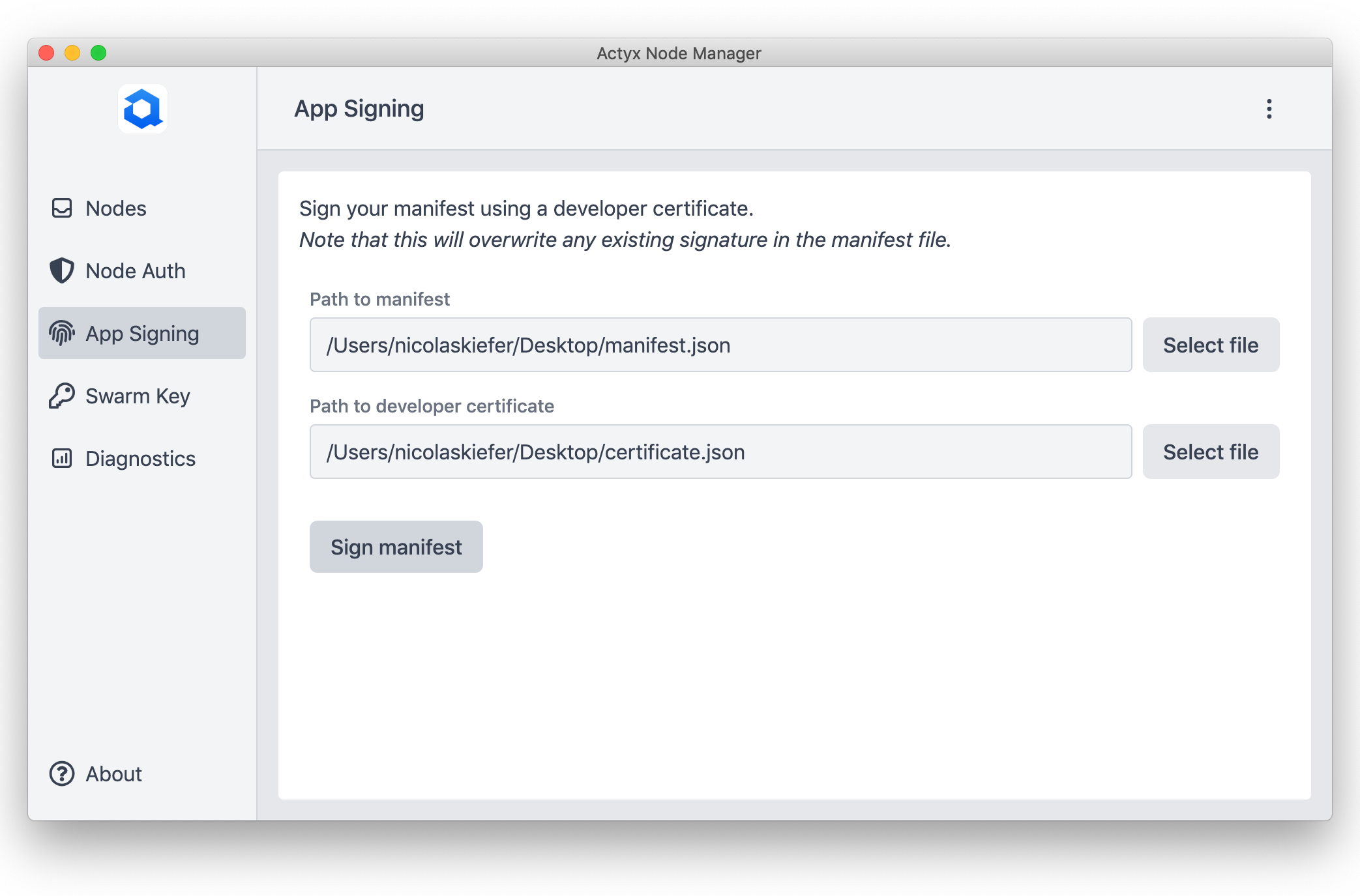Sign app manifest
This guide is part of a series about running your own Actyx deployment in production. If you haven't done so, we strongly encourage you to read the previous guide!
If you're still testing Actyx or developing your application, set the node licensing
to development in the node settings.
"licensing": {
"node": "development"
}
In order for your app to access the Events API, it needs to be authenticated with the node it is running on. This works by providing the node with a signed app manifest. This how-to guide explains the steps you need to follow to sign your app manifest. You can sign an app manifest with the Actyx CLI in the command line or with the Actyx Node Manager. Independent of the tool you are using, the manifest needs to meet a few requirements.
Actyx accepts manifests without a signature if the app ID is com.example.*. Only when you deploy to production and want to use proper app IDs for authentication, you need to sign your app.
The manifest must be a
.jsonfile. Any other file format will be rejected by the CLI and the Node Manager.The manifest has three required properties:
{
"appId": "<string: app ID>",
"displayName": "<string: display name>",
"version": "<string: version>"
}One additional property that is reserved by Actyx is the
signatureproperty. This property is added or updated by the CLI or the Node Manager when signing a manifest. Apart from that, you can add any additional properties describing your app metadata such as the path to an app icon.
- Node Manager
- CLI
To sign an app manifest with the Actyx Node Manager, please navigate to the App Signing section in the left panel.

Next, specify the path to your developer certificate and the path to the manifest you want to sign.


Note that when signing a manifest, the Node Manager updates the file you provided rather than saving a new one.
To sign an app manifest with the Actyx CLI, you need to use the ax apps sign command as shown in the following example:
ax apps sign "/Users/ax/Apps/Dashboard/manifest.json" "/Users/ax/Documents/certificate.txt"
Note that when you sign a manifest, the CLI updates the file you provided rather than saving a new one.
Note that every time you change one of the three properties listed above, you need to renew the manifest signature since the three properties are used to create it.
If you want to read a more holistic explanation of authentication and authorization with Actyx, please check out our conceptual guide on the topic.